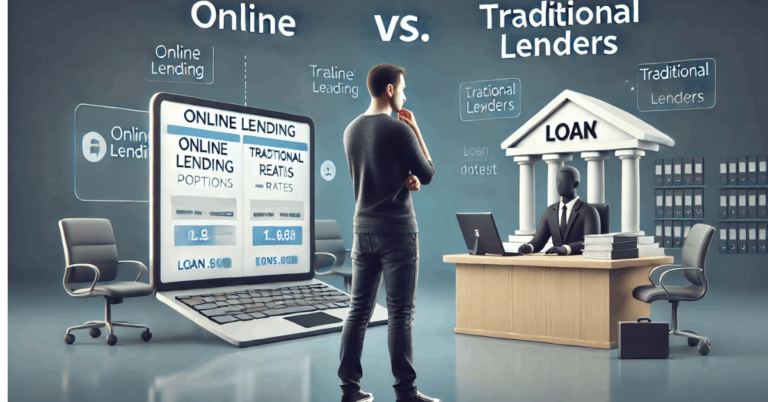Personal loans are a versatile financial tool that can help you cover expenses or consolidate debt, but they come with risks and responsibilities.
This article explores the pros and cons of personal loans, offering insights to help you decide if they’re right for you.
You’ll also learn best practices for borrowing wisely and managing repayment effectively.
What Are Personal Loans?
Personal loans are unsecured for various expenses, like debt consolidation or home improvements.
They are repaid in fixed installments over a set period.
Pros of the Loans
Personal loans offer several benefits, making them an appealing option for many borrowers. Here are the key advantages:
- You can use the funds for various needs.
- Interest rates are fixed, and payments are predictable.
- No collateral is required for unsecured loans.
- Interest rates are often lower than credit cards.
- You can consolidate high-interest debt into one payment.
- Responsible management can improve your credit mix and score.
Cons of the Loans
While personal loans can be helpful, they also come with drawbacks to consider before borrowing. Here are the main disadvantages:
- Interest rates are higher compared to secured loans.
- Loans may include fees like origination fees and late payment penalties.
- Irresponsible use can lead to accumulating more debt.
- Fixed repayment terms might lack flexibility.
- Missing payments can negatively impact your credit score.
- Borrowing limits may not cover all your financial needs.
Types of Personal Loans
Personal loans come in different types, tailored to meet various financial needs and preferences. Here are the main types:
- Unsecured Personal Loans – No collateral is required based on creditworthiness.
- Secured Personal Loans – Backed by collateral, such as a car or savings account.
- Fixed-Rate Loans – The interest rate remains constant throughout the loan term.
- Variable-Rate Loans – The interest rate fluctuates based on market conditions.
- Debt Consolidation Loans – Specifically designed to combine multiple debts into one payment.
- Co-Signed Loans – Requires a co-signer to guarantee repayment.
- Personal Lines of Credit – Provides access to a set amount of funds, used as needed.
Interest Rates and Fees
Understanding specific rates and fees can help you calculate the actual cost of a personal loan. Here’s what to expect:
- Fixed Interest Rates – Typically range from 6% to 36% APR, depending on your credit score and the lender.
- Variable Interest Rates – Often start lower than fixed rates, around 5% to 30% APR, but can increase over time.
- Annual Percentage Rate (APR) – This includes both the interest rate and fees, giving a more comprehensive cost ranging from 7% to 40% depending on creditworthiness.
- Origination Fees – Usually 1% to 8% of the loan amount, deducted upfront or added to the loan balance.
- Late Payment Fees – It may vary by lender ranging from $25 to $50 or 5% of the overdue amount, depending on the lender.
- Prepayment Penalties – Often 1% to 5% of the remaining loan balance, though many lenders don’t charge this fee.
- Application Fees – These are rare but can be $10 to $50, depending on the lender.
Always read the fine print to understand how these fees apply to your loan.

How to Compare Personal Loans
When choosing a personal loan, comparing your options ensures you get the best terms for your financial situation. Here are key factors to evaluate:
- Interest Rates – Look for the lowest annual percentage rate (APR) available.
- Loan Terms – Compare repayment periods to find a balance between manageable payments and total interest paid.
- Fees – Check for origination fees, prepayment penalties, or other charges.
- Loan Amounts – Ensure the lender offers the amount you need.
- Eligibility Requirements – Review credit score and income criteria to determine if you qualify.
- Lender Reputation – Research customer reviews and lender reliability.
- Customer Support – Evaluate the lender’s responsiveness and support services.
When Should You Consider a Personal Loan?
Personal loans can be a smart financial choice in certain situations. Here are scenarios when you should consider one:
- Debt Consolidation – To combine multiple high-interest debts into one manageable payment.
- Major Purchases or Expenses – These finance significant costs like renovations or medical bills.
- Emergency Situations – When unexpected expenses arise, you need quick access to funds.
- Building or Improving Credit – Establish or enhance your credit profile by responsibly managing payments.
- Avoiding High-Interest Alternatives – As a lower-interest option than credit cards or payday loans.
- Predictable Repayment Plans – When you need fixed monthly payments to plan your budget effectively.
Impact of Personal Loans on Credit Scores
Personal loans can affect your credit score positively and negatively, depending on how you manage them.
Here’s how they can impact your credit:
- Hard Credit Inquiry – Applying for a loan triggers a hard inquiry, temporarily lowering your score by a few points.
- Credit Mix – Adding a personal loan can improve your credit mix if you previously only had credit cards.
- Payment History – On-time payments boost your credit score, while missed payments harm it significantly.
- Credit Utilization – Unlike credit cards, personal loans don’t directly impact utilization, but responsible use can improve your credit profile.
- Loan Default – Failing to repay the loan severely damages your credit score and remains on your report for up to 7 years.
- Length of Credit History – A new loan shortens your average account age, which may slightly lower your score.
- Debt-to-Income Ratio – While not directly affecting your credit score, lenders consider this when evaluating future credit applications.
Best Practices for Using Personal Loans
Using personal loans responsibly is essential to avoid financial pitfalls and maximize their benefits. Here are the best practices to follow:
- Borrow Only What You Need – Avoid overborrowing to keep your debt manageable.
- Compare Lenders – Shop for the best interest rates, terms, and fees.
- Read the Fine Print – Understand all loan terms, including fees, penalties, and repayment conditions.
- Have a Repayment Plan – Budget for monthly payments to ensure timely repayment.
- Avoid Multiple Loans – Limit borrowing to prevent overwhelming debt.
- Use Funds Wisely – Reserve personal loans for necessary expenses, such as debt consolidation or emergencies.
- Monitor Your Credit – Track how the loan affects your credit score and address any issues quickly.
- Pay on Time – Set reminders or automate payments to avoid late fees and credit damage.
Alternatives to Personal Loans
Alternative options exist if a personal loan isn’t the right fit for your financial needs. Here are some common alternatives:
- Credit Cards – These are useful for minor expenses with potential rewards or cashback benefits but often carry higher interest rates.
- Home Equity Loans or Lines of Credit (HELOC) – Secured loans with lower interest rates, using your home as collateral.
- Borrowing From Family or Friends – Informal loans with no interest or fees, though they can strain personal relationships if not repaid.
- 401(k) Loans – Borrowing from your retirement savings with lower interest but potential penalties or tax implications if not repaid.
- Payday Alternative Loans (PALs) – Small, short-term loans offered by credit unions with lower interest rates than payday loans.
- Peer-to-Peer Lending – Online platforms that connect borrowers with individual lenders, often with competitive rates.
- Cash-Out Refinancing – Refinance your mortgage to access cash, typically at a lower interest rate.
- Personal Savings – Using existing funds to avoid borrowing and interest altogether.
Final Takeaways
Personal loans can be a valuable financial tool when used wisely, but weighing their pros and cons and considering alternatives is essential.
By understanding the options available and following best practices, you can make informed decisions that align with your financial goals.
Take the next step by comparing lenders and exploring your options to find the best solution for you.


